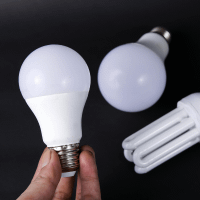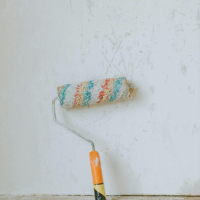Introduction
To save money with simple home upgrades, focusing on energy efficiency and security can yield significant cost savings. By implementing targeted improvements, homeowners can reduce energy consumption, enhance comfort, and improve safety, all while minimising expenses. The following sections outline vital strategies for achieving these savings.
Energy Efficiency Upgrades
Thermal Home Upgrades: The Victorian Healthy Homes Program provided compelling evidence that relatively straightforward thermal enhancements have the potential to make a substantial impact on energy consumption patterns. The primary interventions analysed were improvements in insulation and air leak sealing within residences. These actions not only led to a remarkable decrease of 25.5 megajoules per day in natural gas usage but also contributed to more stable and comfortable indoor temperatures throughout the year. The ramifications of these improvements extended beyond mere energy savings; they also translated into lower healthcare expenditures by fostering healthier living conditions. The program ultimately resulted in a marked enhancement in the overall quality of life for the residents involved, demonstrating the profound benefits of thermal upgrades for individuals and the community (Page et al., 2024).
Comprehensive Retrofit Programs: A thorough meta-analysis examining a variety of home energy upgrade initiatives underscored the significant advantages associated with multi-measure retrofits. These retrofits encompass various interventions, including replacing HVAC systems, upgrading insulation, sealing air leaks, and installing energy-efficient windows and doors. Data from diverse programs indicated that such comprehensive approaches yield substantial energy savings and considerable reductions in greenhouse gas emissions. Moreover, the findings reveal that these multifaceted retrofitting strategies effectively meet energy efficiency goals and are financially viable for homeowners. The cost-effectiveness of these solutions underscores their potential to serve as a practical and sustainable choice for those seeking to improve their residences while minimising their environmental footprint (Grevatt et al., 2017).
Insulation and Air Sealing: Installing insulated doors, windows, and cavity wall insulation is pivotal in lowering energy consumption associated with heating and cooling processes. These measures represent some of the most financially prudent and effective methods for enhancing home insulation. By implementing such insulation techniques, homeowners can significantly diminish the energy required to maintain comfortable indoor temperatures, especially during extreme weather conditions. The resulting decrease in energy usage reduces utility bills and promotes a more sustainable lifestyle by lowering overall energy demand. As a result, these insulations and air-sealing strategies lead to immediate economic benefits and foster long-term environmental responsibility by reducing annual energy expenses (Poynor, 2015).
Home Security Enhancements
Implementing essential home security devices is a practical approach to enhancing the safety of residential properties. Specifically, devices that utilise Zigbee technology for sensors and alarms serve a dual purpose of preventing theft and reducing the risk of fire incidents. These devices can include door and window sensors that detect when a door or window is opened, motion detectors that sense movement in a room, and smoke alarms that detect smoke or fire. All these devices are designed to provide real-time alerts in case of unauthorised access or fire hazards.
These systems’ effectiveness lies in deterring potential intruders and their role as early warning mechanisms for fire emergencies. These devices work together to create a comprehensive safety net when integrated into a home security layout. Their cost-efficiency further highlights the practicality of such systems; homeowners can invest in security solutions without incurring significant financial burdens. The initial setup costs are often outweighed by the long-term benefits of preventing theft and ensuring a safer living environment.
Moreover, the peace of mind that comes with knowing that one’s home is equipped with reliable security devices cannot be overstated. Homeowners can feel secure in their dwellings, confident they have taken proactive measures to protect their families and property. As highlighted by Jin et al. (2014), investing in essential security measures can be a sensible decision, providing essential protection against various threats without necessitating substantial financial investments. This balance of affordability and effectiveness makes essential home security devices attractive for many individuals looking to enhance their home safety strategy.
Technological Upgrades
Microcomputer Enhancements: Integrating simple microcomputers into existing systems can significantly enhance performance and efficiency. By upgrading traditional equipment with microcomputer technology, users can experience a marked improvement in operational capabilities. This leads to better performance and gives homeowners a sense of control over their home systems. For instance, consider the enhancement of a transient recorder. When upgraded with a microcomputer, this device experiences advancements in data acquisition and processing capabilities. This upgrade results in more accurate and reliable data collection while also allowing for more sophisticated analysis of transient events. The benefits of such enhancements are not limited to specialised equipment; they can also be extended to various home systems. For instance, integrating microcomputers into home automation systems can facilitate improved control and monitoring of household appliances, increasing functionality and energy efficiency. These enhancements create opportunities for better management of resources and overall system performance, ultimately contributing to a more streamlined and effective user experience in various applications (Fornili, 1980).
Conclusion
When homeowners consider upgrading their properties, they are often motivated by the potential for significant savings in the long run. These upgrades can encompass a variety of improvements, such as energy-efficient appliances, enhanced insulation, or advanced heating and cooling systems. While the prospect of lower utility bills and increased comfort can be highly appealing, the sense of accomplishment that comes with making these upgrades should not be overlooked. It is crucial to consider the initial investment amounts required for these upgrades. The upfront costs can vary widely depending on the scope and scale of the improvements. Therefore, a thoughtful evaluation of these initial expenses is necessary to understand the full financial implications.
Furthermore, assessing the potential return on investment is an equally important aspect that homeowners should not overlook. This involves examining how much money can be saved over time due to the upgrades, balanced against the initial outlay. Homeowners should carefully analyse their needs, as not all upgrades yield the same benefits or savings. It is advisable to prioritise improvements that fit the existing budget and align with long-term financial objectives. This strategic approach ensures that the upgrades made will contribute meaningfully to overall savings without causing financial strain.
In addition to evaluating personal finances, homeowners can explore government incentives and programs to promote energy efficiency and sustainability. These initiatives can offer financial support through tax credits, rebates, or grants, effectively reducing the costs associated with home upgrades. By taking advantage of such programs, homeowners can enhance the financial viability of their investments, making it easier to implement necessary improvements while maximising the overall benefits. This comprehensive examination of immediate costs and long-term gains, paired with potential external financial assistance, creates a more straightforward path toward a more efficient and cost-effective home environment.






